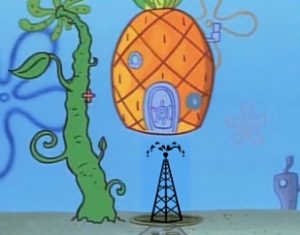Fast Company has a series of articles about the rise and fall and … of Chipotle.
 The core of the food safety stories seems to be that Chipotle milks its consumers, so has endless money to spend telling those consumers why it’s safe to eat at Chipotle without backing things up.
The core of the food safety stories seems to be that Chipotle milks its consumers, so has endless money to spend telling those consumers why it’s safe to eat at Chipotle without backing things up.
The protagonists in this opera involving a lot of barf and a dabble of cocaine, are former professor Mansour Samadpour of IEH Laboratories in Seattle, and Jim Marsden, a meat guy and former professor at Kansas State University.
I was a colleague of Marsden, worked for IEH for three months, and can fully agree with this statement regarding the merits of either’s approach to food safety at Chipotle: “If you’re in a courtroom and you listen to both sides of the argument, it’s hard to say that anyone is 100% correct. It’s all wrapped up in a lot of academic infighting and politics.”
Marsden and Mansour both know a lot of science. They know shit about consumers. History is filled with great hockey players who go on to be lousy coaches, or scientists who stray from their base of expertise and make fools of themselves. But that’s for Chipotle to figure out.
For a company that’s supposed to be supplying ethical ingredients (whatever that means) for over-priced shit, they seem to have picked the wrong argument.
What’s it going to take for customers to barf less?
Mark Crumpacker, the chief creative officer and marketing lead at Chipotle, said “It’s great to be back” upon returning to the restaurant chain after a three-month leave of absence involving foodborne outbreaks, plummeting share value, and cocaine.
Since returning, Crumpacker’s team has launched a new ad campaign, in partnership with Austin-based agency GSD&M, highlighting the “royal treatment” Chipotle gives its ingredients.
 That imagery alone is fairly drug-induced, and any notion that Chipotle is nothing but a business squeezing what it can out of suppliers while marketing overpriced shit is delusional.
That imagery alone is fairly drug-induced, and any notion that Chipotle is nothing but a business squeezing what it can out of suppliers while marketing overpriced shit is delusional.
“Obviously our marketing is built on this idea of fresh, high-quality ingredients,” Crumpacker says. “So [the food-safety issues were] sort of like the ultimate insult to that position.”
Because there is nothing in fresh, high-quality ingredients that says safe: Adjectives are the language of hucksters (these are the greatest make-you-fat burritos, ever. They’re really great).
Crumpacker was central in helping the Mexican fast-casual chain foster a glossy aura around its brand, which became synonymous with fresh ingredients and an ethical value set.
Like Keith Richards and Eric Clapton, I so much enjoyed their work when they were high.
The story also says Chiptole hired Burson-Marsteller, the crisis-management PR firm the bottom-feeders of PR hacks that has supported Chipotle since the outbreaks (for a cost, paid for by all you yuppies).
Anyone who hires B-M is corporate mainstream, not some hippies selling ethical burritos, whatever that means.
 Austin Carr of Fast Company asks in another story, is it now safe to eat at Chipotle?
Austin Carr of Fast Company asks in another story, is it now safe to eat at Chipotle?
Wrong question.
Was it ever safe to eat at Chipotle given their gross negligence of microbial food safety issues and vast embrace of marketing hucksterism.
Co-CEO Steve Ells says, “Justifiably, people really question our trust. You lose that trust. For how long? We’re working really, really hard to get that trust back.”
Multiple industry experts tell me that Chipotle did not take food safety seriously enough or invest sufficient resources into quality assurance (QA). “When this [outbreak] first broke, the leadership at Chipotle, and I include Steve and [co-CEO] Monty [Moran], were completely sideswiped and didn’t know what the hell they were doing,” says one source familiar with Chipotle’s food-safety measures. “They had not really considered food safety at the level that they should have.”
The question is not how bad Chipotle fucked up and how a chain of such size and profits bamboozle the American public, the question is who will be next? And will anyone pay attention when some voice in the forest says in 2007, these Chipotle types are not focused on food safety?
 Before its E. coli incidents, a slew of sources tell me that the food safety and QA team overseeing the company’s entire supply chain included just four people, a low number for a chain of Chipotle’s scale and complexity. The company also split its safety teams, which some suggest created arbitrary divisions of responsibility within the organization. Heidi Wederquist, then Chipotle’s director of QA and food safety, oversaw supply-chain issues, but had little visibility into restaurant operations. Conversely, Tim Spong, who knew Moran in college and served as outside counsel for Chipotle before joining the company, managed safety, security, and risk at the restaurant level. “There is no way a team that small could properly manage all the food coming into that system,” says one former analyst at the company, who now works for a chain much smaller than Chipotle but with a QA team that’s twice its size. Chipotle spokesperson Chris Arnold disputes the visibility claims but confirms the rest, adding that the team was “strengthened” with additional hires after February 2016 and that the two groups have now been merged under Spong’s leadership. (Additionally, Jason Von Rohr, Chipotle’s executive director of supply chain, who was responsible for sourcing all of Chipotle’s ingredients, departed shortly after the E. coli outbreaks. Multiple sources indicate he had been planning to leave Chipotle and his departure was not a result of the outbreaks. He has since joined Amazon.)
Before its E. coli incidents, a slew of sources tell me that the food safety and QA team overseeing the company’s entire supply chain included just four people, a low number for a chain of Chipotle’s scale and complexity. The company also split its safety teams, which some suggest created arbitrary divisions of responsibility within the organization. Heidi Wederquist, then Chipotle’s director of QA and food safety, oversaw supply-chain issues, but had little visibility into restaurant operations. Conversely, Tim Spong, who knew Moran in college and served as outside counsel for Chipotle before joining the company, managed safety, security, and risk at the restaurant level. “There is no way a team that small could properly manage all the food coming into that system,” says one former analyst at the company, who now works for a chain much smaller than Chipotle but with a QA team that’s twice its size. Chipotle spokesperson Chris Arnold disputes the visibility claims but confirms the rest, adding that the team was “strengthened” with additional hires after February 2016 and that the two groups have now been merged under Spong’s leadership. (Additionally, Jason Von Rohr, Chipotle’s executive director of supply chain, who was responsible for sourcing all of Chipotle’s ingredients, departed shortly after the E. coli outbreaks. Multiple sources indicate he had been planning to leave Chipotle and his departure was not a result of the outbreaks. He has since joined Amazon.)
Thanks for the org.chart.
All those people who paid a premium to barf thank you for the org.chart.
Originally, Chipotle followed the guidance of food-safety scientist Mansour Samadpour, who runs the Seattle-based consultancy IEH Laboratories. He’d initially focused the company’s food-safety program on a mix of supply-chain testing and what are called “interventions” or “kill steps,” which work to eliminate pathogens from ingredients. For example, he introduced blanching produce to Chipotle, a kill step whereby Chipotle workers put lemons, limes, onions, avocados, and jalapeños into 185-degree water for five seconds before preparing them for customers.
When Chipotle hired James Marsden in February 2016 to be its director of food safety, he shifted the company to adopt more of these interventions, while winding down Samadpour’s testing system. He expanded the company’s blanching system, for example, to include bell peppers.
One of Marsden’s first acts was to create an ordered list of the riskiest ingredients on the restaurant’s menu. At the top of his list? Chipotle’s beef. Though there likely wasn’t one smoking gun that caused the outbreaks, in terms of particular ingredients, sources indicate Chipotle had narrowed its investigation to a select few items, including onions, cilantro, and beef. Cross-contamination was likely, but because the company’s E. coli outbreaks were limited to around 60 infected people, some food-safety sources suggest it was more than likely Chipotle’s beef was the original culprit that carried the E. coli, since it is a cooked item (unlike, say, cilantro), which may have reduced how widespread the outbreak could have been.
Or, familiarity breeds contempt, and Marsden would be most familiar with beef.
 Likewise, the company, which briefly moved the preparation and sanitation of lettuce to its central kitchens after the outbreaks, has since returned heads of romaine to its stores. How can it do this without risking another outbreak? For the lettuce at least, Chris Arnold, the Chipotle spokesperson, says the company has introduced a new “multi-step washing process” to reduce the risk of pathogens. Marsden boasted to me how Chipotle’s lettuce is safer now because it implemented what’s called “harvest testing,” meaning that it is tested in the field before being shipped to suppliers. But this is a baseline standard in the industry; the company was already doing harvest testing before the crisis.
Likewise, the company, which briefly moved the preparation and sanitation of lettuce to its central kitchens after the outbreaks, has since returned heads of romaine to its stores. How can it do this without risking another outbreak? For the lettuce at least, Chris Arnold, the Chipotle spokesperson, says the company has introduced a new “multi-step washing process” to reduce the risk of pathogens. Marsden boasted to me how Chipotle’s lettuce is safer now because it implemented what’s called “harvest testing,” meaning that it is tested in the field before being shipped to suppliers. But this is a baseline standard in the industry; the company was already doing harvest testing before the crisis.
And those bugs are hard to wash off.
A bunch of us figured out on-farm food safety 20 years ago, to prevent, as much as possible, bugs getting on things like lettuce.
No mention of that.
But lettuce ain’t beef.
Marsden has also unveiled his own testing system, to replace the solution initially implemented by Samadpour, the outside consultant from IEH Laboratories (who has since stopped working with Chipotle). This new system centers on “routinely” verifying the efficacy of Chipotle’s intervention requirements. Rather than having suppliers take and test more frequent samples of raw beef, for example, they can now test at far fewer intervals because the meat is precooked; they’re primarily doing this to ensure that kill steps, such as the sous-vide process of cooking steak, are working properly.
The company has suggested that it is now “doing more testing than we have ever done,” as Arnold tells me. Upfront, this new testing system requires resource-intensive validation studies, to ensure that the entire system is functioning correctly. But after these studies are performed, the company’s food will undergo substantially less food testing than it was under Samadpour. As with Samadpour’s testing program, there are complicated pros and cons to Marsden’s system, but as one neutral food-safety observer says, “If you’re in a courtroom and you listen to both sides of the argument, it’s hard to say that anyone is 100% correct. It’s all wrapped up in a lot of academic infighting and politics.”
This infighting is not purely academic. According to four sources familiar with the situation, Heidi Wederquist, Chipotle’s director of QA and food safety, disagreed with the direction of the company’s program. She has since departed Chipotle to join Samadpour’s IEH Laboratories. Her second in command, Chipotle’s former QA manager, followed her to IEH as well. (Arnold says he cannot comment on the reason for Wederquist’s departure. Wederquist did not respond to multiple requests for comment on this matter.)
Following the outbreaks, Steve Ells, Chipotle’s founder and co-CEO, indicated to the public that the company would soon be 10 to 15 years ahead of the restaurant industry in terms of food safety.
More unsubstantiated bragging.
The program Marsden developed, centered on interventions, is a strong system, industry experts say, but it’s not exactly revolutionary. Kill steps are common in the restaurant industry, as is the type of testing Marsden adopted. If anything, this new food-safety system has raised questions about how fresh Chipotle’s food remains today.
The efficacy of Chipotle’s food-safety system is still left, to an extent, up to its crew workers, who are expected to properly wash items such as its lettuce; properly blanch much of its produce; properly handle and cook raw chicken; and properly follow in-restaurant hygiene protocols, such as hand washing, temperature logs, and other food audits. These 60,000 crew workers make an average of $10 an hour and the average Chipotle restaurant sees its headcount turn over at least once a year.
